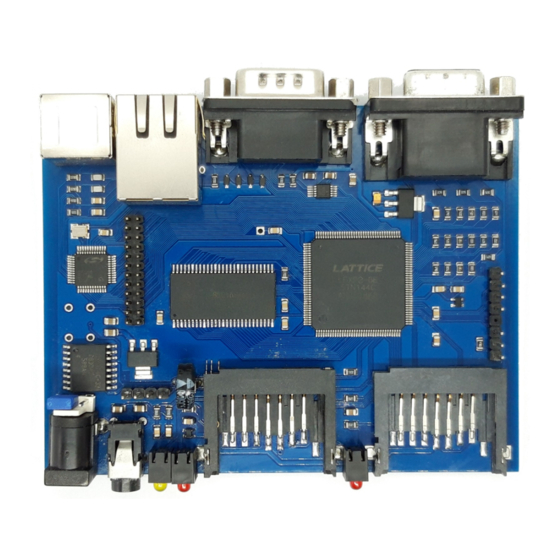
Table of Contents
Advertisement
Quick Links
Advertisement
Table of Contents

Summary of Contents for Sinclair Q68
- Page 1 MAINBOARD USER'S MANUAL Version 10/2020...
-
Page 2: Chapter 1: Overview
Like the original QL mainboard, the Q68 is a complete solution including graphics, peripherals and sound. It can be fitted into an available case. The Q68 does not need any parts from an existing QL, nor QL ex - pansion or speedup cards. - Page 3 This is implemented in hardware and does not require any software changes. You can make the Q68 screen look like a QL connected to a historic monochrome monitor in black & white,...
- Page 4 Please do not touch the integrated circuits when handling the mainboard. To charge the buffer of the realtime clock, it is recommended to keep the Q68 powered on for more than 24 hours after the first use, or if it has not been used for a long time. For this purpose, it does not matter if any operating system is running.
-
Page 5: Chapter 2: Hardware
This 3 pin header primarily allows to connect a switch between the external power plug and the Q68 inter- nal power. In order to supply the Q68, pins 2 and 3 of this header need to be connected, using a switch, jumper, or solder connection. - Page 6 It is possible to solder an optional Reset button at this location. Ground and Reset signal (low-active) are available on the upper two pads. A reset button is not required to operate the Q68. Normally, only a power switch is used to restart the system.
- Page 7 LED to display read or write activity. SDHC1 is the primary mass storage socket of the Q68. The Q68 will try to boot from a card inserted here. SDHC2 is the secondary socket and may be left empty.
- Page 8 Please note that the Q68 does not use the original QL SER1 / SER2 pinout. The hardware delivers serial mouse power supply. The Q68 operates at a 7 or 8 bit rate. There is no parity nor hardware handshake. Description...
-
Page 9: Chapter 3: Software
To access these containers efficiently, the Q68 expects the container files not to be fragmented in the FAT32 file structure. Once the Q68 has found the beginning at a container file, it assumes the rest of that container file lies in continuous sectors on the card. Moreover, these container files must be located within the first 16 root directory entries of the FAT32 partition. - Page 10 Q68 ROM Loader The Q68 has a 96 KB ROM area at the start of the address range. This area has a double usage. At po - wer-up, it is first used by the internal hardware ROM, containing a smal bootloader firmware. This bootloa- der will then, as a second step, load the actual operating system from SDHC card into an emulated ROM area at the same location.
- Page 11 Booting from serial port If no ROM or RAM image is found, or no valid SDHC card is present, the Q68 will print the message „Load ROM from SER“ and attempt to boot from serial port. A fixed baudrate of 115200, no parity, no hardware handshake is expected.
-
Page 12: Chapter 4: Memory Map
Chapter 4: Memory Map Below you can see the QL and the Q68 memory map as an overview about the physical hardware locati- ons. More detailed documentation for developers is also available on request, but is not included in this User's Manual. -
Page 13: Chapter 5: Copyright And Disclaimer
GNU Lesser General Public License as published by the Free Software Foundation. The Q68 is a hobby project intended for retro-computing and fun purposes, not to process important data. It is distributed in the hope that it will be useful, but without warranty of merchantabilty or fitness for a parti- cular purpose.